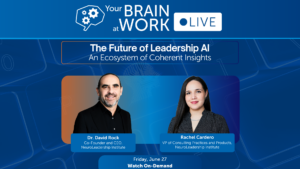Diversity & Inclusion are at the forefront of every business leaders’ mind today. Current events have placed a glaring spotlight on the pervasive bias in institutions large and small, public and private.
Many organizations are now realizing the importance of creating workplaces that foster diverse talent and promote meaningful inclusion. And they’re feeling a real sense of urgency to act.
Even with a genuine and admirable intention to act, many leaders find themselves at a loss for a practical way forward. While it’s key to do things right now, it’s also important to do them right. At NLI, that means follow the science.
Here are resources to help leaders understand the science underlying Diversity & Inclusion, and ways to create change at their organizations.
If You Have a Brain, You Have Bias
It is a fact of nature that human beings have bias.
There is nothing inherently wrong about bias. In fact, it’s an evolutionary adaptation that has allowed our species to survive up to this point.
Our research on bias has found that an overwhelming number of unconscious biases impact our thinking every day, both personally and professionally. We’ve condensed that overwhelming number of biases into the five main categories that make up the SEEDS Model®: Similarity, Experience, Expedience, Distance, and Safety.This foundational model can help us understand where bias creeps into our decision making, and gives us tools to mitigate it.
While the research is mixed on whether bias education can work, at NLI we have hard data showing it can. In one analysis of our work, 78% of over 9,000 people who learned the NLI approach to bias mitigation were actively reducing bias 1-3 times a week.
To dive deeper into the science of bias, check out our blog post Here’s Why Having a Brain Means You Have Bias, or our paper in Strategy + Business, Beyond Bias.
Change Behaviors, Not Beliefs
Good intentions don’t always translate into great actions. That’s why, despite making D&I a priority, leaders and organizations often fall short on actually implementing change.
NLI’s change model can help organizations enact the change they envision. The model defines three critical components of change: Priorities, Habits, and Systems.
Priorities are about raising awareness of something and having people agree on its importance. Habits are about the behaviors that we want to see based on the priorities. And Systems reinforce the priorities we’ve set, and the habits we’ve adopted.
Organizations can leverage NLI’s change model to implement real change.
To learn how, read our articles in Forbes: Don’t Change Beliefs, Change Behaviors; Follow the Science of Culture Change to Transform D&I; and To Build Better Systems, Be Like Odysseus.
Create Coherent Systems
To create real change, organizations should tell one coherent, meaningful story about the value of diversity and inclusion. But more often than not, organizations roll out a series of loosely related D&I initiatives with different stakeholders, objectives, and measures of success.
While individual initiatives can be well-intentioned and well-executed, they often lack coherence—a kind of structural integrity where disparate elements fit together.
D&I initiatives must fit into the larger story you’re trying to tell and serve the larger objectives you’re trying to achieve. That’s where the science of coherence comes in.
To learn more, check out Khalil Smith’s article in Forbes, The Marvel Model: How to Tell a Story With Your I&D Initiatives.
[action hash = “9681a877-d266-48c9-9cbb-7e9336409932”]






